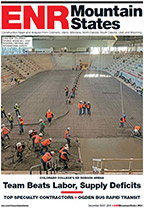Not Quite Out of Gas
The oil-and-gas market is one cause for concern. The sudden drop in oil prices, which started in December 2014, has caused a slowdown in the upstream petroleum market. “We have seen a pullback in both our refinery business and fracking opportunities with the drop in oil and gas prices. Just one year ago, we were making plans to participate in several multibillion-dollar projects. While some may still go forward, this has left a void in one of our target markets for 2015,” says Clayton M. Scharff, CEO of Sachs Electric.
However, many specialty contractors say the midstream and downstream petroleum markets have not been hit so hard. For example, Prime Controls works in the midstream market, “which means that we have not been dramatically affected by the decline in commodity pricing to date,” says McNeil. But he says there could be a potential negative impact on midstream customers if the price of oil remains low.
Petrochemical plant expansions are beginning to move forward after longer-than-expected front-end engineering and planning periods. Many contractors in that market expect a surge in work in the near term. For example, The Brock Group is expecting steep increases in demand for both labor and materials within a short period of time, according to Bob Pragada, Brock’s CEO. Further, he says powerplant combined-cycle conversions are occurring at a faster pace than expected, especially in the northeastern U.S. “We alsosee deferred planned maintenance outages and turnarounds leading to a significant demand and scheduling challenges in 2016 and 2017,” he says.
Many contractors, especially those running heavy equipment or service fleets, say the drop in oil prices has created savings that go right to the bottom line or offset rising prices in other areas of their business. “Yes, we are seeing some savings in lower fuel prices, but all it takes is the cancellation of one major petroleum project to turn lower oil prices into a net negative for us,” says Guzzi.
Unpredictable Cost Issues
Generally, materials and equipment prices have risen at acceptable levels, given the increase in demand. But some contractors are facing unpredictable cost escalations. “We are experiencing double-digit increases in cement. Other equipment and materials are increasing in the high single digits, and tower cranes are becoming very difficult to source and obtain,” says Don Dreier, executive vice president of Donley’s Inc.
D. Thomas Ruttura, president of Ruttura & Sons Construction, says the recent consolidation of the ready-mix industry may be part of the reason for increased concrete prices. He cites as an example Euless, Texas-based U.S. Concrete Inc.’s acquisition of New York City-based Ferrara Bros. Building Materials Corp. U.S. Concrete has acquired seven local materials companies so far this year. Ruttura says this type of consolidation will increase prices and decrease service. When a conglomerate buys a local business, that business’ profits will no longer be spent in the local economy, he observes.
The other side of the coin is the impact of a faltering Chinese economy on commodity prices. Many firms say that a drop in demand from Chinese industry for raw materials has helped ease inflationary pressures. “China has changed the game on materials. No longer is copper priced like gold,” says James F. Reiss, CEO, Westside Mechanical Group.
But this drop in Chinese demand for materials has hurt demolition contractors, as the price of scrap has fallen. “Over the past year, the salvage market has gone down about 60% to date. This downturn is due to the strong dollar … and other economic uneasiness overseas,” says Chris Berardi, president of JDC Demolition Co. “Hands down, the biggest challenges we’re going to face in the coming months are related to the sudden and dramatic drop in the commodities market,” adds David Griffin Jr., president of D.H. Griffin Wrecking Co.







Post a comment to this article
Report Abusive Comment